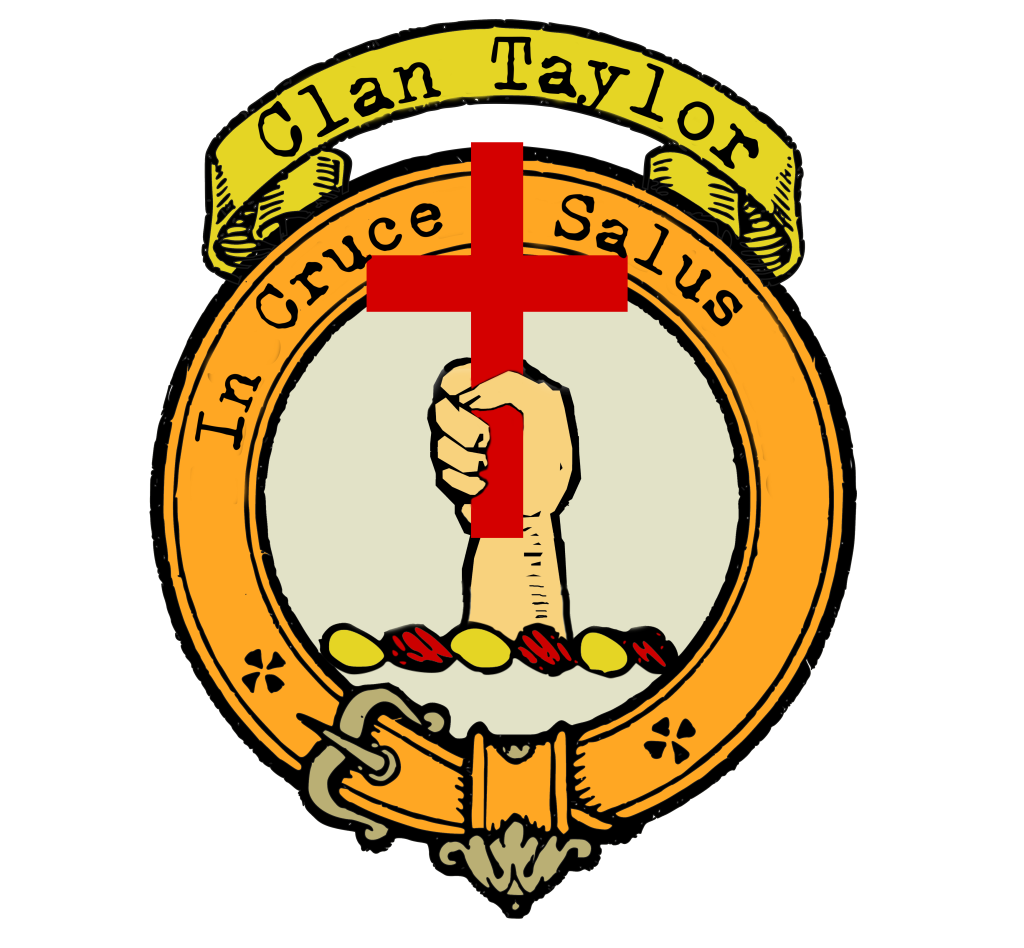Clan Taylor
|
|
CREST: A hand holding a passion cross Gules MOTTO: In cruce salus TRANSLATION: Salvation from the cross VARIATIONS: Tailyour |
| The name “Taylor” itself has a French origin, derived from the word “tailler,” meaning “to cut.” It was rendered in Latin documents as “cissor.” While it may seem unusual for a clan to have such a name, the history of Clan Taylor is anything but ordinary.
Clan Taylor’s presence in early Scots records is well-documented. As early as 1276, we find records of individuals with the name Taylor serving notable roles. Alexandra le Taillur was listed as a valet to Alexander III, and Bryce le Taillur was among the Scottish prisoners captured at Dunbar Castle in 1296. One of the most intriguing references to Clan Taylor can be found in the Ragman Roll of 1296. This historical document lists six individuals with the Taylor surname from various Scottish counties, all rendering homage to Edward I of England. This suggests that Clan Taylor had a notable presence and was scattered across different regions of Scotland during this period. The clan’s history is further evidenced by land grants and deeds. Walter Cissor, for example, received a land grant from David II around 1137. In 1462, Donald Cissor and Bricuis Cissor were witnesses to a deed in Inverness, reinforcing the clan’s presence in various parts of Scotland. The name Taylor is not limited to a single variation. In Scotland, you can also find it in the form of “Macintaylor.” Several Macintaileours were fined in 1613 for sheltering members of the outlawed Clan Gregor, showcasing their involvement in the tumultuous times of clan conflicts. One of the most remarkable chapters in Clan Taylor’s history is its contribution to technological innovation. James Taylor, born in Lanarkshire in 1753, is credited with the first practical application of steam power to vessels for inland navigation. This innovation led to the launch of the first paddlewheel steamboat in 1788 at Dalswinton, achieving a remarkable speed of five miles per hour. This pioneering work laid the foundation for the development of the iconic paddle steamers that revolutionized transportation on North American rivers and beyond. |
|
Citations:
|
|
Purchase @ Redbubble
Purchase @ Amazon.com
Purchase @ Amazon.co.uk

